Search results for Artifact
People
Not Found
Tweets including Artifact
📢 Artifact Whitelist Early Access
👉Link https://t.co/QoV2bVpc6B
👉Fill Mail&Very
#Artifact# #BTC# https://t.co/pB0BGIsY1z

0
0
61
46
67
The Genesis Artifact NFT comes to life in CafeCosmos! 💫 You only have 48 HOURS LEFT to claim the exclusive NFT for the OG community 🏅 Don't miss out on the biggest onchain game of this year. ⌛️⌛️ https://t.co/0IiPki4D8h
Show more

0
0
278
9.8K
9.3K
Continuing the story of the jade artifacts unearthed from the tomb of a Guo State ruler, located by the Yellow River bank and dating back 2,700 years.
In the upper left is a delicately carved little elephant, charming in its posture. Judging by the craftsmanship, it dates back 3,000 years to the Shang dynasty, likely a war trophy preserved by the Zhou after their conquest of Shang.
The upper right shows a jade deer - it might remind you of a Christmas reindeer.
Where there is an adult deer, there is also a fawn. The lower left features a small, adorable jade carving of a young deer.
In the lower right is a cormorant, captured in jade with a sense of fluid motion.
Think about the moments when, 2,700 years ago, the Guo ruler gently touched this little elephant, and gazed upon that young deer. Today, under the soft lights of the exhibition hall, we meet them once again.
Silent for millennia, they still speak to us - of civilization, belief, and beauty.
Show more
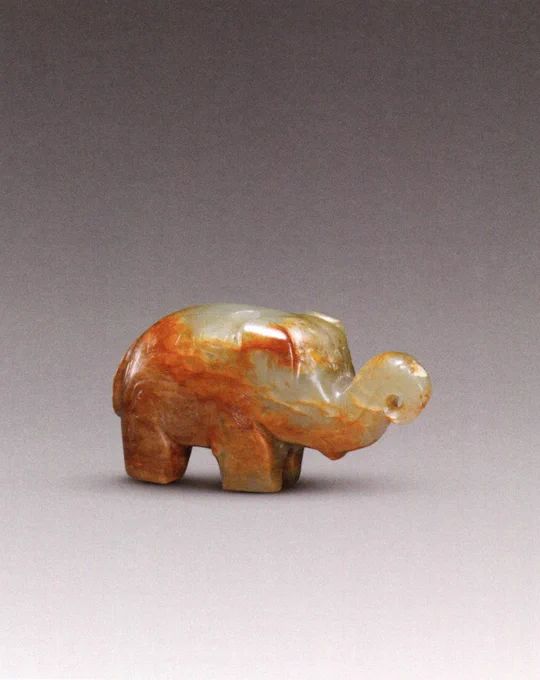
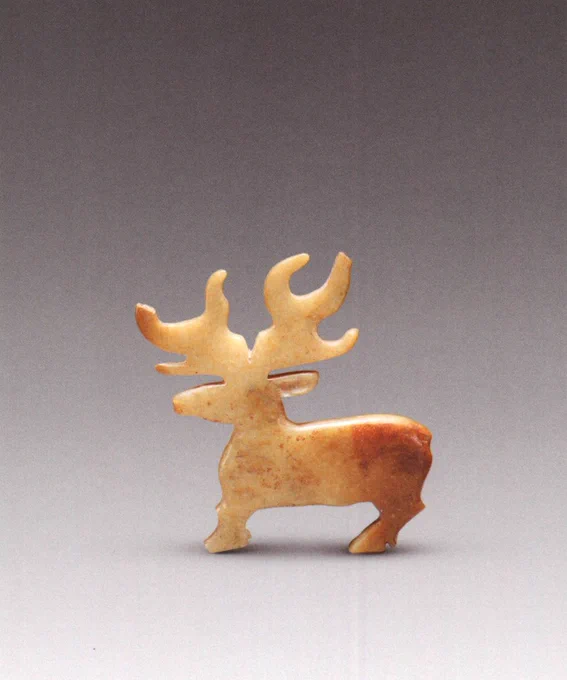


0
0
11
450
111
FREE Mint Alert🔔Get the Genesis Artifact NFT for CafeCosmos (usable in-game). Limited time only. Link in bio NOW! https://t.co/r4jDT3WZ4A
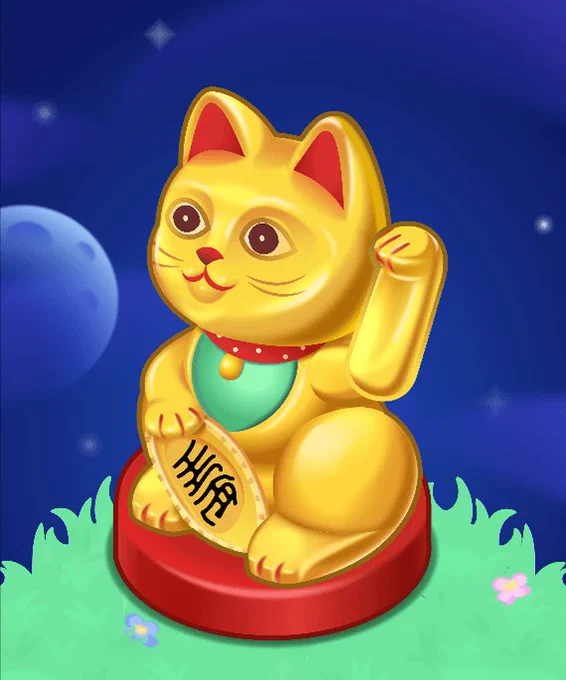
0
0
914
36.6K
35.7K
Tap the video and time-travel at Hai’an Qingdun Site Museum. Explore ancient artifacts like the mysterious ceramic axe and ancient dwellings, and hear the whispers of Hai'an's first storytellers 5,000 years ago. https://t.co/vY4ClbWFH4
Show more
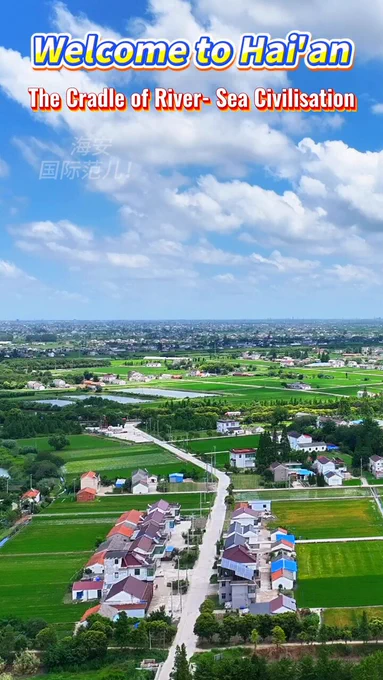
0
0
6
587
31
Ahoy, degens! I just discovered a mysterious artifact on @Tabi_NFT.
Join me on the voyagers‘ expedition, where we uncover a wealth of exquisite treasures. Hop on board and let's catch the wind. https://t.co/pivDO1oIpX
Show more
0
0
1
1
0
Researchers have identified the wreck of Nossa Senhora do Cabo, a Portuguese ship captured by pirates in 1721, off the coast of Madagascar. The site revealed over 3,000 artifacts, including diamonds, gold bars, and rare porcelain. If fully verified, it could be one of the most valuable pirate shipwrecks ever discovered.
For more content like this, please visit: https://t.co/wYpbt8jPU1
#shipwreckdiscovery# #piratehistory# #archaeologyfinds# #madagascar#
Show more
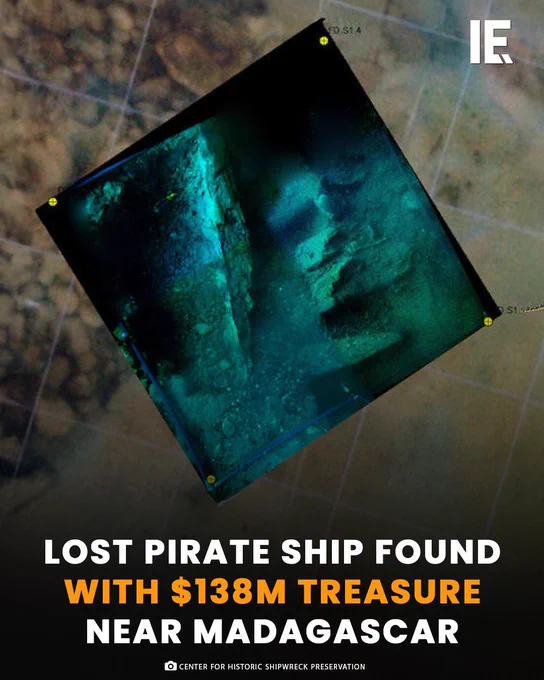
0
0
0
2
0
Albert Hall Museum, a 19th-century architectural marvel spanning 19 acres, serves as a gateway to history and art. Its halls showcase a rich collection of Indian and global artifacts, reflecting diverse cultural heritage. (1/2)
#BharatFromMyLens# #CultureUnitesAll# https://t.co/sYKVHPAUUM
Show more
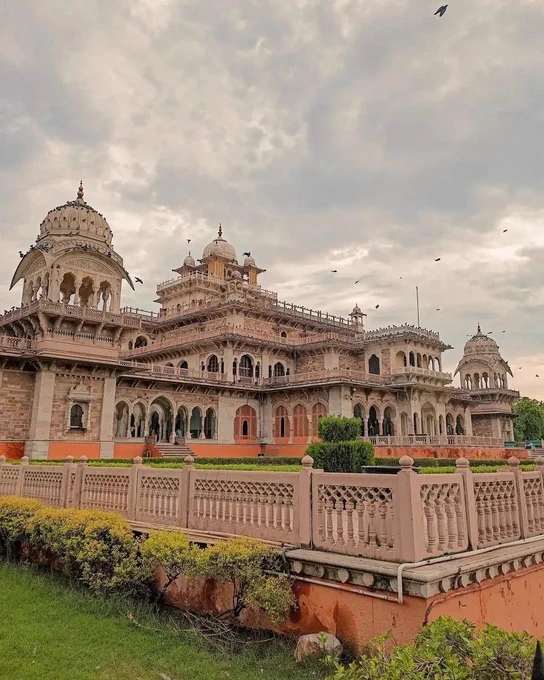
0
0
1
61
18
有个人给了我 trae 的邀请码,测下 solo 模式。
几天过去了,kol 们早吹完了。该我来喷了。
1 solo 模式并不算好用。愿景不错,实现全流程闭环。几个项目综合体验下来,和别家半斤八两。
不过这不是 trae 的锅。
而是目前这个阶段,全地球,没有任何一个模型+产品,能实现一个基本靠谱的闭环。
一个都没有。
有特例,但那是用的人牛逼,不是产品。
2 但这个新 solo 模式吧,印证了字节的产品力是真的强。
那个 solo 模式吧 chat 抬到主位置,右边像是“artifact”一样。虽然不是我理想中的那个样子,但确实是同类产品里,可能是最合理的一种布局模式了。
激进又合理。
也好看。但这些“artifact”其实还是一种 debug ,而不是最终产物,现在混在一起,还是有点别扭。
3 solo 的效果如何?
第一条说了一半了,一般,和别人家不相上下。人不行的话还是用不好。
不过有个特点,它特别善于查漏,但不善于补缺。
如果不说 solo 模式,就 ide 模式下,我得说,这一版其实很好了。使用时候的心流有点接近 windsurf 的 flow 的意思了。
不想吹捧,但产品里,综合体验看来,trae 就是国内第一。
同行们还是比较不争气的。
北京目前遥遥领先杭州和深圳。
Show more
0
0
1
4
0
The Heritage Commission and global experts have uncovered evidence of human settlement in Umm Jirsan cave, #Madinah#. Spanning 10,000 years, these findings reveal the lives of early settlers from the Neolithic to the Bronze Age, including artifacts like animal bones and rock art. https://t.co/A533mk2ffd
Show more



0
0
6
10
3
Over the past year, quite a few followers have suggested that I write something about Sanxingdui. I truly value every piece of feedback from friends here on X. That said, Sanxingdui research remains one of the most niche areas within Chinese archaeology, and I myself had not studied it in depth until recently.
Last year, I had the privilege of visiting the Sanxingdui site with @RnaudBertrand and his lovely family. Since then, I've been reading a large number of excavation reports, and I've also had the privilege of consulting several outstanding archaeologists who were directly involved in the excavations. As a fun coincidence, one of them even turned out to be a fellow Stanford alum-we were on campus at the same time, though our paths never crossed before.
In the coming months, I plan to share a series of posts introducing Sanxingdui, weaving together what I saw during that field visit, what I've learned through personal research, and insights from conversations with leading experts in this field. I'll do my best to present Sanxingdui in a way that is in-depth, engaging, and accurate.
Let me begin with a brief overview. In Chinese, Sanxingdui means "three star-shaped mounds (三星堆)." The site is located just north of Chengdu and is about an hour's drive from the city center. In 1929, a local farmer discovered a cache of jade artifacts in front of his courtyard and the news soon reached to local foreigners. Surprisingly, this didn't lead to plunder or looting, which was so often in that chaotic age. Instead, they ended up financially supporting a joint excavation with Chinese archaeologists.
In the decades that followed, more jade, stone, and pottery artifacts were unearthed. But without a chance discovery in 1986-when workers at a local brick kiln were digging for soil-Sanxingdui might never have captured the attention of China or the world.
That discovery revealed exquisite bronzeware, including two large pits believed to be sacrificial. Inside were a wealth of stunning bronze, jade, and even gold artifacts. These finds catapulted Sanxingdui to prominence as one of China's most mysterious and astonishing archaeological sites. The uniquely shaped bronze masks, human figures, and sacred trees-imbued with strong religious and shamanistic symbolism-suggest an advanced and enigmatic ancient civilization.
Who were these ancient people? What did they believe in? Why did they suddenly disappear? How did they relate to the Central Plains civilizations? These are some of the questions I'll explore in this Sanxingdui series.
Let me start by introducing the first artifact: a towering bronze figure discovered in the 1980s. To date, it's the tallest early-period bronze human figure ever found in China, standing 262 cm tall and weighing around 180 kilograms. When first excavated from the sacrificial pit, it was broken into two pieces, with some areas deformed-likely intentionally damaged before it was buried in the pit.
The bronze figure stands 172 cm tall, with a 10 cm crown, bringing the total height to 182 cm. His facial features are sharp and angular, with prominent eyes and circular holes in each earlobe. He wears three layers of thin robes-the innermost layer reaches past the calves and splits at the back-with intricate patterns etched onto the fabric.
His hands form circular grips, as if once holding something. Scholars have variously speculated that it might have been ivory, a ritual staff, or even a dragon or serpent. Because of his imposing stature and elaborate garments, many believe he represents either the highest deity of the Sanxingdui people, a king, or a chief priest. Curiously, however, he is barefoot, wearing anklets-creating a striking contrast between his ornate attire and his unshod feet.
This large standing figure wears a crown shaped like a blooming flower, with leaf-like extensions on either side.
On the front lower part of his robe, there appears to be the face of a cicada or a bird. In ancient times, cicadas were associated with regeneration due to their molting, while birds, capable of flight, symbolized a dream of transcendence shared by many early human cultures.
Looking at his back, you can see two holes in the head area, likely used to affix decorative hairpins. At the top of his back is a dragon, and further down are two coiled dragons with clawed feet shaped like bells. Yes-you could say he's wearing a dragon robe. On the right side of the figure, there's still debate about one particular feature-some scholars think it might be a thumb.
He stands on a beautifully decorated base, adorned with interlinked dragon heads.
He has stood there, silent for three thousand years, as if still watching something.
Perhaps one day, we will understand what he was trying to tell us.
Until then, I'll do my best to tell his story.
Show more
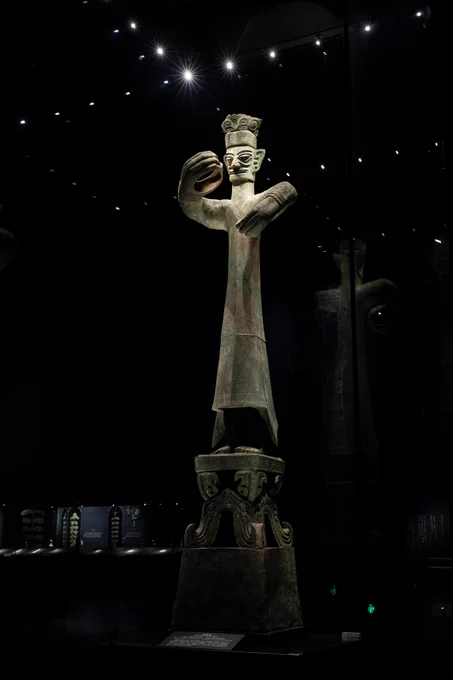
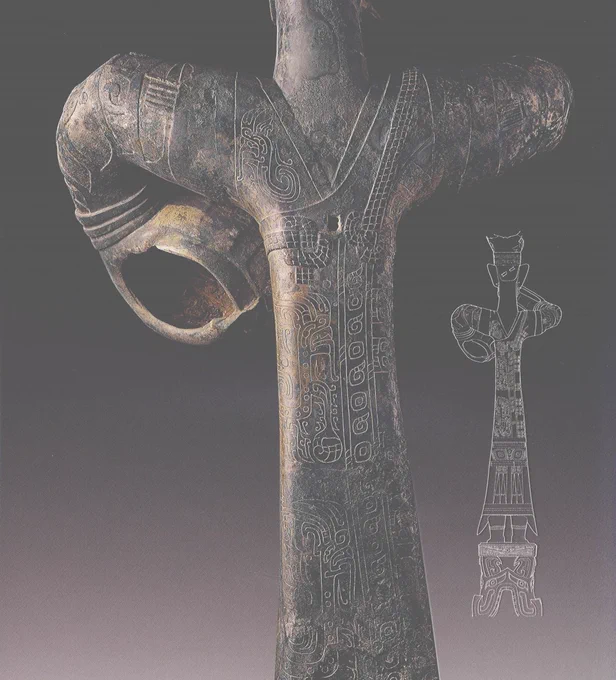
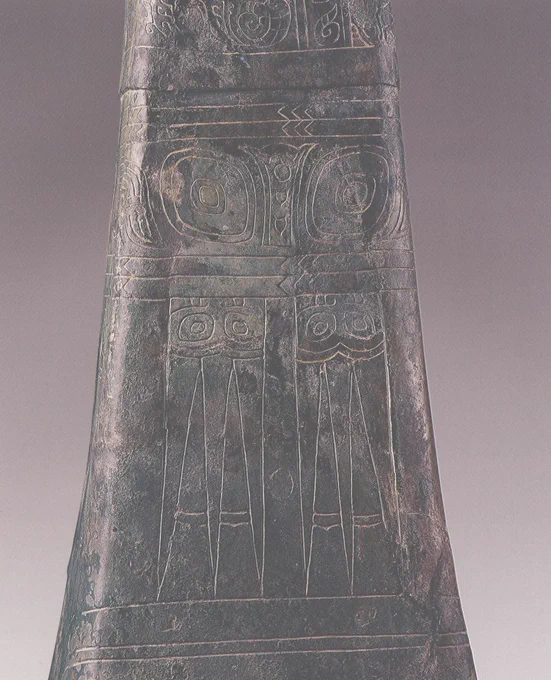
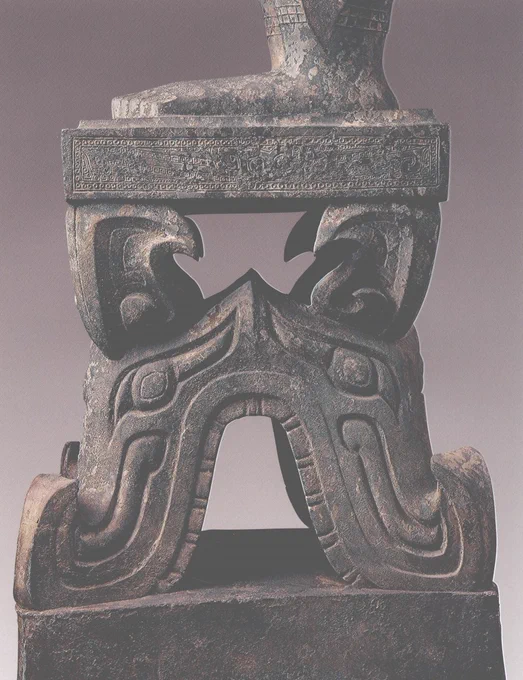
0
0
2
18
7
Emperor Qianlong of the Qing dynasty (1644-1911) was celebrated not only for his scholarly achievements in Confucianism but also for his profound mastery of Han culture. Today, the Palace Museum in Beijing houses numerous portraits of Qianlong dressed in Han attire, leading many young people today to jest that he was a master in cosplay.
In this particular painting, a youthful Emperor Qianlong is depicted wearing traditional Han clothing, playing a guqin beside a lake (top right). In the distance, towering mountains rise majestically, while a flowing stream runs nearby. Under his pavilion, blooming lotuses add to the serene beauty (bottom left). The vases inside the pavilion are also adorned with lotus flowers. Besides the vase is a plate with fruit. The crystal mountain-like subject in the plate is mysterious. I inquired my mentor, vice president of the museum, she is not sure either. We guess it could be just a piece of ice or a crystal artifact (bottom right). Although this idyllic scene is imagined, it reflects the emperor’s scholarly persona, finding joy in natural landscapes and companionship in the sounds of the guqin.
A closer inspection reveals that the facial features of Qianlong and his two attendants are rendered in a Western style. This suggests that the painting was likely a collaborative effort between a Western painter responsible for the portraits and a Chinese artist who painted the landscape, merging both artistic traditions.
Show more


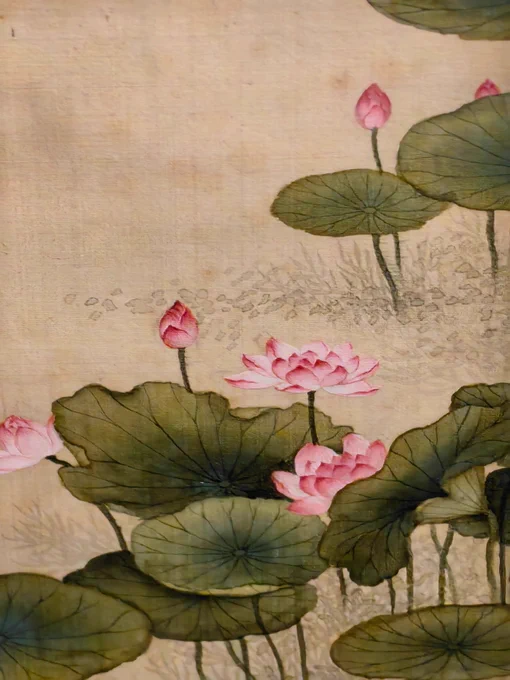

0
0
15
196
38
💧 Artyfact Airdrop💧
🏆 Task: ➕ 175 USDT (Weekly) for 3 best content creator.
🔛 Airdrop Link & Information: https://t.co/PKC0G1AnGE
#cryptocurrency# #Airdrop# #Bitcoin# #AskNoel# #NOEL# #Airdropstario# https://t.co/yWRU059U4A
Show more

0
0
24
64
73
📣🎁 Artyfact USDT Airdrop 🎁 is now live!
🎁 Total Airdrop Pool: 35,000 USDT
💰 Reward: 25,000 USDT for 1000 random winners
👥 Referral: 10,000 USDT for top 1000 referrers
📼 Audit & KYC: Certik
Start the Artyfact Airdrop Bot: https://t.co/PSDZj7jZL7 https://t.co/IQxyxOyKwm
Show more

0
0
362
612
556
Iron Age village unearthed in UK reveals roundhouses, ovens, and rare artefacts from over 2,400 years ago. https://t.co/akrDpnGQo7


0
0
1
2
0
"El Museo Albert Hall, una maravilla arquitectónica del siglo XIX que abarca 19 acres, sirve de puerta de entrada a la historia y el arte. Sus salas exhiben una rica colección de artefactos indios y de todo el mundo, reflejo de un patrimonio cultural diverso."
📍Jaipur, Rajastán
Show more
Albert Hall Museum, a 19th-century architectural marvel spanning 19 acres, serves as a gateway to history and art. Its halls showcase a rich collection of Indian and global artifacts, reflecting diverse cultural heritage. (1/2)
#BharatFromMyLens# #CultureUnitesAll# https://t.co/sYKVHPAUUM
Show more

0
0
0
0
0











